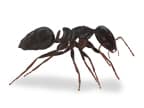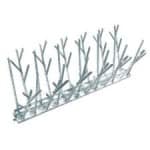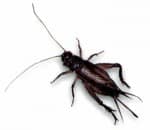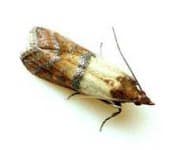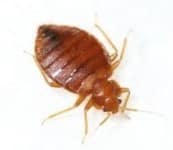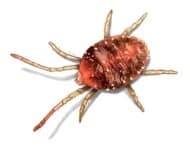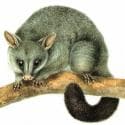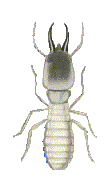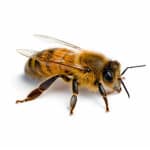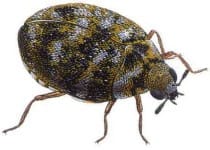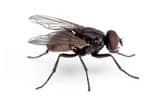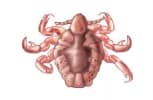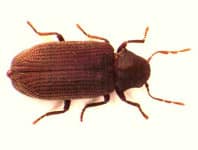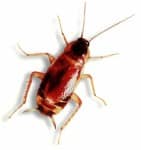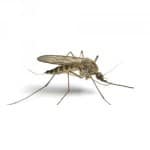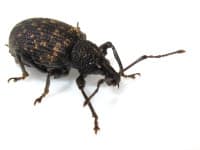PEST INFORMATION
Rats & Mice Pest Control & Treatment
A few facts about rodents:
- Rodents can gnaw through materials such as steel, cement and plastic including electrical wiring.
- Rodents have continuously growing incisor teeth that are used for gnawing.
- To keep their incisors at a manageable length rodents have to constantly gnaw.
- A female rat and her offspring can theoretically produce 2,000 rats per year.
- A female mouse and her offspring can theoretically produce 15,000 mice per year.
- Every year a rat produces 15,000 droppings, 6 litres of urine and sheds 300,000 hairs.
- A mouse produces 30,000 droppings and 1 litre of urine per year.
- Rats and mice can spread salmonella through their droppings.
- Leptospirosis or Weil’s disease is spread through infected rat urine to food and water sources.
- For every 1kg of food eaten by rats and mice a further 3kg has been contaminated. Rats require a separate source of drinking water, mice can survive on the moisture in food.
- Over 20% of farm fires are caused by rodents gnawing through electrical cables.
- To survive rats and mice have developed behavioural or physiological resistance to many current anticoagulants.
- A rat can fit through a gap the width of an adult thumb (25mm to 30mm.
- A mouse will fit through a gap the width of a pencil (10mm to 15mm). So whilst you may think a hole in your wall or timber floors might be too small for our furry friends to gain access to, you will be surprised at the small spaces they can squeeze into.

Roof Rat
The roof rat is the smaller of the two pest rat species. It has a pointed snout, large prominent ears and a tail longer than its body length. Roof rats generally live indoors; their strong climbing ability gives them the access needed to infest roof voids and many cityscape buildings. They can also easily travel between buildings via connecting power cables. These rats create severe hygiene problems if around food areas and can also start house fires if they are in your roof void. If you see any signs of the roof rat in your home, please call KR Pest Control.
Signs of Roof Rat Infestation
Visual sightings of live or dead rodents indicate rodent activity. If roof rats are seen exposed, it often indicates their hiding spaces are all filled by other rats or that they have been disturbed, such as by construction. Droppings are another good indicator of roof rat activity. Roof rat droppings are 12 to 13 mm with pointed ends, whereas Norway rat droppings are 18 to 20 mm and capsule shaped. Other indicators can include grease marks along surfaces as well as nests. Grease marks are produced as the rodent travels along an edge, and the oils in their fur are deposited. Indoor nests usually are constructed in insulation such as in attics.
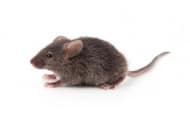
House Rat
The Norway Rat, also known as the brown rat or sewer rat, is the largest of the two pest rat species. It has a thick body, blunt snout, small ears and a tail shorter than its body length. These rodents usually live in burrows, however they have been known to infest warehouses, shops, rubbish areas, and domestic premises. These rats create severe hygiene problems if around food areas and can also start house fires if they are in your roof void. If you see any signs of the Norway rat in your home, please call KR Pest Control.
Signs of a Norway Rat Infestation
Norway rats are not usually seen exposed unless driven out of their hiding spaces because of limited space or disturbances. Sightings during the day often indicate a potentially large infestations. Outdoor burrows surrounding the building may be an indication of Norway rat nesting. Other signs of Norway rats are their gnaw marks on food and objects such as utility lines. Rub marks or grease stains caused by rats running along an edge also can indicate activity. In general, the darker the stain, the greater the activity. Perhaps one of the most well-known signs is their droppings. Norway rat droppings are blunt and 18 to 20 cm long. They can be scattered along frequently travelled rodent pathways.
Common House Mouse
The house mouse is small and has rather large ears, a pointed snout, and a tail at least as long as its body. They can live both indoors and outdoors and, due to their small size and agility, can access and infest almost anywhere in your home or workplace.
Even though they do not consume large amounts of food, they can cause widespread damage due to gnawing, nibbling, and contamination with urine and faeces. If you see any signs of the common house mouse in your home, please call KR Pest Control.
Signs of a Common House Mouse Infestation
Sightings
Although more commonly active in the evening, it is possible to see a house mouse roaming in your home during the day. Most often these animals are spotted scurrying along walls or running from a normally undisturbed hiding place.
Droppings
Where there are mice, there are droppings. These small pellets are commonly found anywhere the animals have visited or travelled. Approximately 3 to 6 mm long, the droppings may be rod shaped with pointed ends.
People may confuse house mouse droppings with those of the American cockroach. Even though the general size and appearance of these droppings are similar, mouse droppings usually have hair embedded in them from where the mice have groomed themselves. Roach droppings also are not pointed and usually have ridges running down the sides.
Footprints
As mice explore their territories, they often leave behind footprints or tracks on surfaces. The distinct pattern of a four-toed front foot and a five-toed back footprint are a clear sign that a mouse has passed by.
Gnawing/Chewing
House mice are known for their ability to chew on a wide variety of items. In most cases, shavings and a fresh accumulation of debris is often the first indication of damage. Teeth and gnaw marks can also be found along the edges of frequently traveled routes, on the corners of objects or creating openings into an area.
Burrows/Tunnels
House mice tend to build nests in material that provides a dark and protective environment, such as insulation and other soft materials. These nests are often characterized by openings or tunnels that are free of dust and cobwebs, but may be littered with droppings.
Sounds
During the evening hours, especially when it is dark and quiet, these small animals can often be heard gnawing and scratching within the walls, running across the ceiling and possibly squeaking.
Odour
House mouse urine plays an important role in communicating with other rodents. Often, rodents will mark an area to attract females or warn off other males. A distinct odour may become noticeable in an area with a large rodent population or when rodents have been present for a long period of time.
All Pests
Our Difference
Eco Friendly Products
We use eco-friendly pest control products that are safe for children & pets. We care about our planets' future.
Commercial, residential & strata
From large commercial scale projects to residential pest control solutions for the home and apartment building complexes, we have got you covered. Read more about our pest control services here.
Looking for specific information?
Are you after specific information about a certain pest? Comb through our pest archive here.

over
YEARS ESTABLISHED
over
COMPLETED SPRAYS
Send Us a Message




